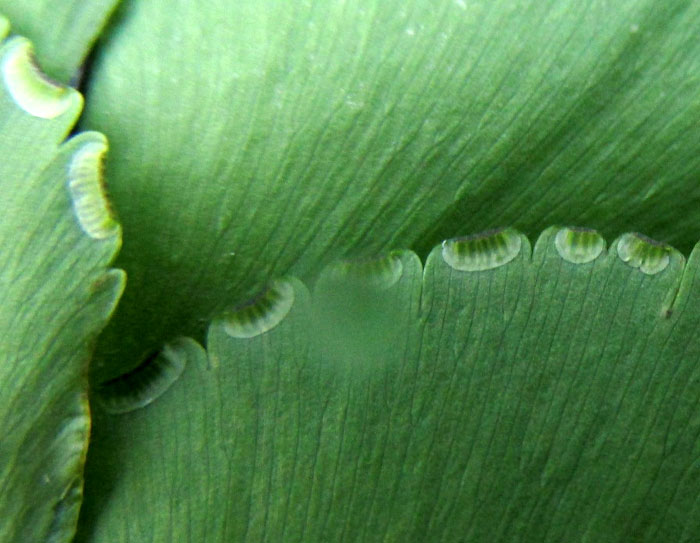Excerpts from Jim Conrad's
Naturalist Newsletter
entry from field notes dated October 6, 2022, taken along the main road on the northern side of Gómez Farías, on the lower eastern slope of the Eastern Sierra Madres, El Cielo Biosphere Reserve, southern Tamaulipas state, MÉXICO; elevation about 350m (1150 ft), ± LAT. 23.04°N, LONG. -99.15°W
DIAMOND MAIDENHAIR FERN

Beside the road heading north out of the village of Gómez Farías, about 1km from the town park, the above fern species formed a bathroom-size thicket in the undergrowth of a somewhat disturbed, steeply sloped, wooded area. With its broad frond divided into three main segments, which themselves are divided into segments, which again are divided into ultimate segments, all the individual parts arranged on slender, brittle, blackish stems and rachises, it's clearly a maidenhair fern, genus Adiantum. However, worldwide maybe 200 maidenhair species are recognized, with their center of diversity in South America's Andes region, and about 35 documented in Mexico, so which one is this?
This species' ultimate segments display an unusual shape, plus their undersurfaces display a slightly silvery sheen known as glaucescence, as shown shown below:

Maindenhair ferns, instead of grouping their tiny, spore producing sporangia into sori scattered across their fronds' undersurfaces, as with many of the most commonly encountered ferns, when they are immature they are protected beneath underturned, flap-like growths of the segments' margins called false indusia. Our fern's sori were still immature, but the false indusia were easy to see, shown below:

In Mexico, if you have a maidenhair fern divided into so many divisions and subdivisions, the blackness of the short stalk of each individual final segment does not bleed into the segment's leaf tissue, the frond is hairless, and the tip of the next-to-last subdivision of the frond with its numerous final segments is not a pointed tip, but rather a flat-backed, butterfly-shaped segment, then you have what's often called the Diamond Maidenhair Fern, ADIANTUM TRAPEZIFORME. A trapezoid is a four-sided form with only one pair of parallel sides.
Diamond Maidenhairs occur in moist or wet forests usually below 900m in elevation (3000ft), from northern Mexico and the Caribbean area south through Central America to here and there in South America, plus it's invasive in Asia and the Pacific, and has been collected in Florida in the US. It's a relatively large, handsome fern, sometimes cultivated and escaped.